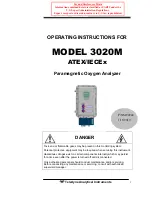
Circuit Description— Type 1L40
Fig. 3 -8 . Crystal va ria b le resolution filte r.
and Q430. The IF transformers are tuned to the IF by adjust
ing the capacitance of C425 and C435. Gain of the ampli
fier is varied by changing the forward bias of Q420, which
then sets the bias of Q430 through the DC return of its base
to the emitter of Q420. A feedback winding of T424 to the
base of Q420 provides the neutralization for the collector
to base capacitance.
The 75 MHz IF and the output from crystal controlled 70
MHz oscillator Q440, are applied to mixer amplifier
Q450. The collector load of Q450 is T454, which is tuned to
5 MHz, couples the signal to the 5 MHz IF amplifier
Q460. Diode D454 in the collector load of Q450 improves
the overload characteristics of the amplifier. Output of the
5 MHz IF signal is applied through insulated connector J470
to the input of the variable resolution amplifier.
Variable Resolution Amplifier
The variable resolution am plifier (see schematic) is design
ed to vary the bandwidth of the 5 MHz IF from 100 kHz or
more to 1 kHz or less. Bandwidth of the circuit is a function
of the output load for a crystal filter network. By varying the
output load a variable resolution bandwidth is obtained.
The signal input to the variable filter circuit is insulated
from chassis ground and connects across R501-R502 as
shown in Fig. 3-8A. Crystal Y501 is a 5 MHz crystal, connec
ted in series between the input and the parallel resonant
circuit L508-C508. Bandwidth or resolution of the circuit is
dependent on the characteristic response of the crystal at its
series resonant frequency and the Q of the parallel resonant
circuit L508-C508.
Fig. 3-8 illustrates the impedance response versus fre
quency curve of a quartz crystal. Capacitor C504 neutra
lizes the stray shunt capacitance around the crystal so the
response of the crystal is equivalent to a series tuned cir
cuit with a very narrow bandpass1; see Fig. 3-9.
The bandwidth of the filte r network is a function of the
crystal output load, which is primarily the parallel resonant
circuit; therefore, bandwidth becomes a function of the Q for
the resonant circuit. The Q of the output load circuit for the
crystal is varied by changing the bias of diode D506, which
changes the shunt loading across the parallel-tuned circuit.
As the forward bias of D506 is increased, the Q of the
parallel resonant circuit decreases and the response charac
teristic of the crystal becomes the dominant factor in deter
mining the bandwidth of the filter network. The crystal
response is very narrow, so the resolution is increased as the
diode forward bias increases.
SW550, the RESOLUTION selector, can be coupled to the
DISPERSION selector and when so coupled, provides normal
resolution for each position of the DISPERSION selector pro
vided the sweep rate is not too high. See Operating section.
However, by pulling the control knob, the RESOLUTION
selector is uncoupled and any desired resolution within the
range of the control can be obtained for a given DISPER
SION selector position.
The 100 kHz Resol Cal adjustment R543, is adjusted for a
resolution bandwidth. Bandwidth should equal or exceed
100 kHz with the RESOLUTION selector fully CW and ap
proximately 60 kHz with the control one position back from
the fully CW position. The remaining positions of the control
decrease the bandwidth at each successive step in the counter
clockwise position. This provides adequate resolution for most
displays.
Emitter followers Q510-Q520 isolate the high impedance of
the filte r network from the relatively low output impedance,
thus minimizing circuit loading on the filter network. Q530 is
a grounded-emitter operational am plifier with a relatively
low output impedance to provide the power required to
drive the Log and Square Law circuits.
1 (Ref: F. Langford-Sm ith RAC R adiotron Designer's H andbook; fourth
e d itio n .)
3 -9
Summary of Contents for 1L40
Page 30: ...Fig 3 1 Type 1L40 Block Diagram CO K ISO 2 5 0 MHz 75 MHz Circuit Description Type 1L40 ...
Page 40: ...NOTES ...
Page 54: ...NOTES ...
Page 85: ...NOTES ...
Page 103: ......
Page 117: ...I ...
Page 119: ...T Y P E I L 4 0 S F t C T R U M A N A U V t R A ...
Page 120: ...L R O G 8 R F P H A S E L O C K D I A G R A M A ...
Page 124: ... 75V T Y P L I L A Q S P f c C T R U M A N A L Y Z t R ...
Page 126: ... T y p t S P E C T R u M A N A U V 2 f e R A ...
Page 127: ...4 A P H A S t L O C K C I R C U I T ...
Page 128: ...iv r AMPUH19 1 rRon J9A 4 T Y P E L 4 0 S P E C T R U M A N A L Y Z C R A I ...
Page 130: ......
Page 134: ... IS MHZ IP lO M Hx OSCILLATOR r T Y P E IL 4 0 SPECTRUM ANALYZED ...
Page 135: ... lL I z 5 a or lJ ui Ul X i u tt O a i d id u it l h 5 12 2 a or PO S 3 J3 ...
Page 139: ...DETECTORS i 4 1066 OUTPUT AMPLIPIER ...
Page 140: ...FIG 1 FRONT REAR TYPE 1L40 SPECTRUM ANALYZER ...
Page 141: ...FIG 2 IF CHASSIS PHASE LOCK AS 6 1 ...
Page 142: ...F CHASSIS PHASE LOCK ASSEMBLIES TYPE 1L40 SPECTRUM ANALYZER ...
Page 145: ......
















































